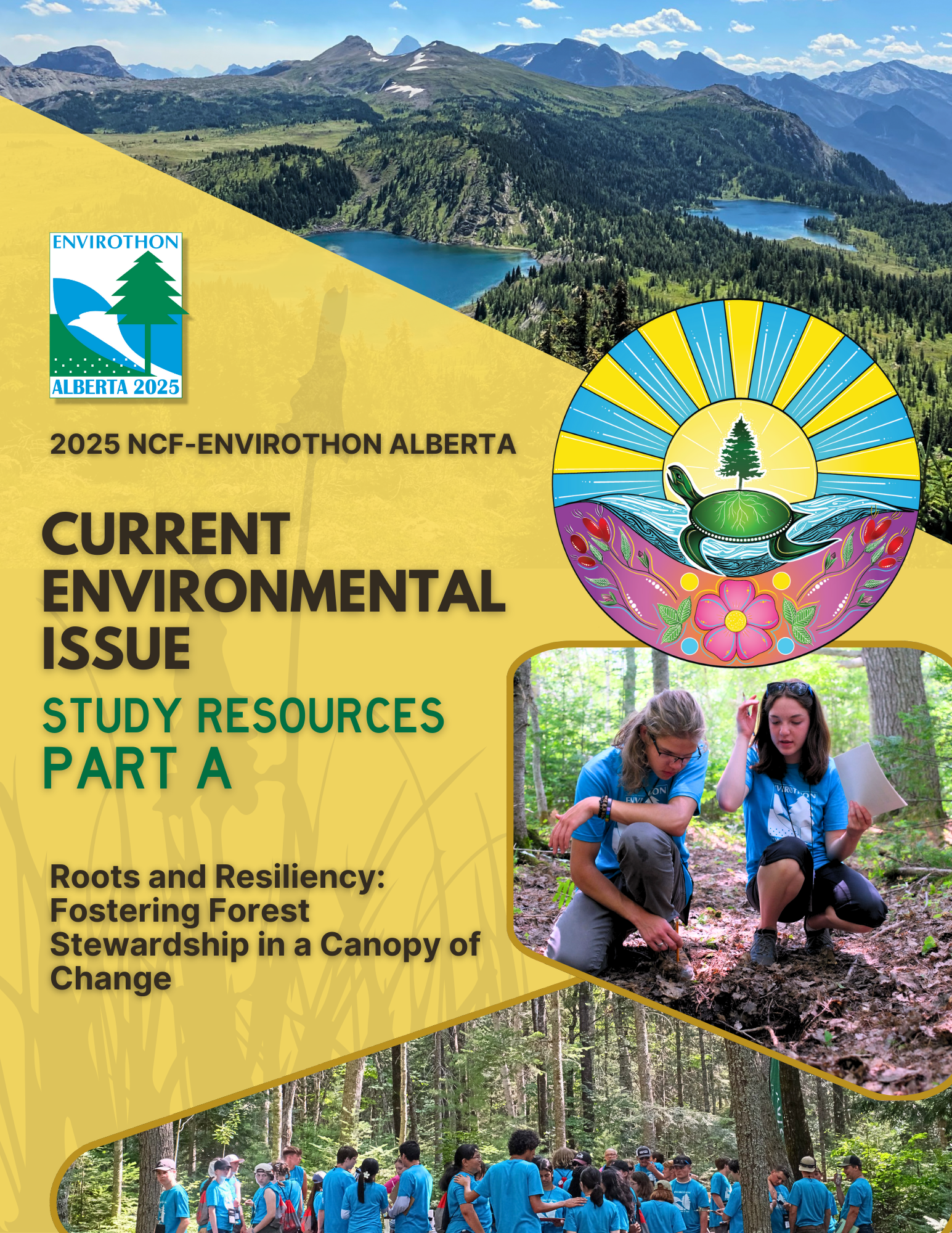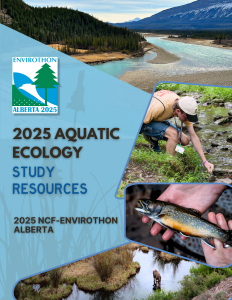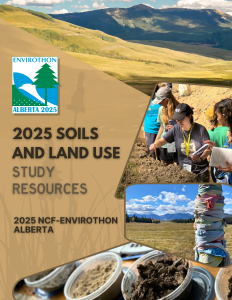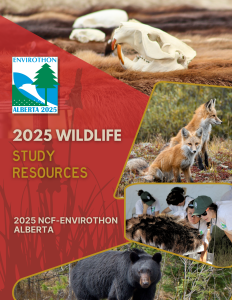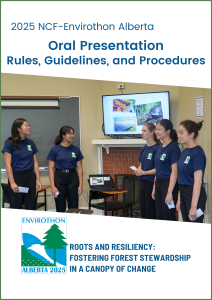
Competition Study Resources
2025 NCF-Envirothon Alberta Competition
July 20 - 26, 2025
Calgary, Alberta, Canada
Scroll down for Study Resources
2025 Current Issue Topic
Roots and Resiliency: Fostering Forest Stewardship in a Canopy of Change
Forests cover 31% of all land area in the world1, making their mark on the landscape and the lives of people around the globe. In Alberta, approximately 60% of the Canadian province is covered by forests2, and these wooded landscapes are an integral part of the identity and culture of those who live there. Since time immemorial, Indigenous peoples have made environmental stewardship a keystone to their ways of being and doing. Beyond their sheer beauty, forests continue to serve as a cornerstone for economic vitality, societal well-being, and ecological richness. Fostering resilient forests is not just about trees: it’s about safeguarding a legacy that intertwines with our society, economy, and commitment to environmental stewardship.
As the world studies climate change, the significance of the forests becomes even more pronounced. Worldwide, forests are experiencing impacts from extreme weather events due to a changing climate, which will result in changes to individual species and the ecosystem as a whole. Climate models suggest Alberta’s forests can expect to experience a variety of changes over the next 75 years3. To understand long-term impacts, we must understand the roots of forest systems to anticipate how forests may respond to changes and how we can help these ecosystems remain sustainable.
Fostering Forest Stewardship in a Canopy of Change is a call to action that calls on us to examine current forest practices, identify where vulnerabilities may lie, and identify necessary adaptations. In every rustle of the leaves and whisper of the wind, there lies an opportunity to create a harmonious partnership with the natural environment and original stewardship practices. To create viable solutions for future resilient forests, one will have to examine traditional ways and knowledge of stewardship, as well as scientific innovations and techniques.
Students will learn how climate models, such as Canada’s four Representative Concentration Pathways (RCPs)3, can help predict the impacts of a changing climate on forests; how this data can be used to facilitate conservation; how a changing climate will influence ecosystem shifts in Alberta; how these projected altered ecosystem are expected to impact Alberta’s forest health; and how these shifts will present challenges to existing forest management and harvest systems. Teams will work together to create innovative solutions to complex problems facing the forest and the environment.
1 Food and Agriculture Organization of the United Nations, Global Forest Resources Assessment 2020
2 AFPA - Alberta Forest Products Association /
3 Representative Concentration Pathways (canada.ca)
2025 Study Resources
Learning Objectives and Resource Guides
Please Note:
- Any hyperlinks within the study resources, except for those specifically mentioned as a resource on the Key Topics pages and with a dedicated page in the resources (i.e., YouTube videos), are supplemental material ONLY. They may be used for additional information, but are not required study resources.
- The below Study Resource files may be large and take time to download depending on your connection speed.
About the Current Issue Study Guides:
There are TWO (2) sections of study resources for Current Issues:
- Part A: Key Topics, Learning Objectives, and Study Resources related to the 2025 Current Issue, featuring resources from regional, North American, and global perspectives. Click on the image to the left to download Part A (please note, image is an update, but the linked file was originally posted on 9/30/2024 and the content has NOT changed).
- Part B: Key Topics, Learning Objectives, and Study Resources related to the 2025 Current Issue, featuring resources more specific to Alberta. Click on the image to the left to download Part B.
BOTH sections will be used for the 2025 NCF-Envirothon Annual Competition's Current Issue test and oral presentation component.
Reminder:
- Any hyperlinks within the study resources, except for those specifically mentioned as a resource on the Key Topics pages and with a dedicated page in the resources (i.e., YouTube videos), are supplemental material ONLY. They may be used for additional information, but are not required study resources.
- The above Study Resources files may be large and take time to download depending on your connection speed!

